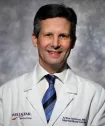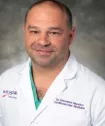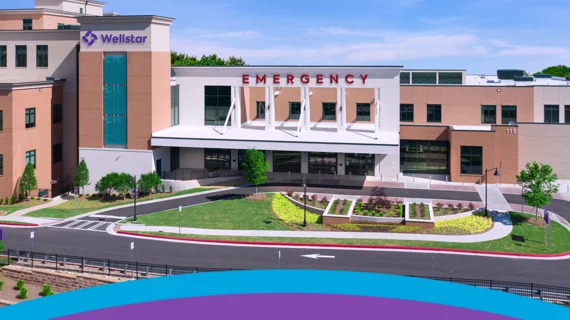Same-day Discharge for PCI: WellStar Embraces Consistency, Culture and ‘the Human Side of Care’
The trend to get PCI patients out of the hospital safely on the same day as their procedure has long been a goal for many health systems. WellStar Kennestone Regional Hospital, part of WellStar Health System in Atlanta, made same-day discharge for a vast majority of PCI patients a mission three years ago.
Their well-oiled team created a successful model that benefits patients and the healthcare system’s bottom line. The path starts with teamwork, with the results speaking for themselves: 84% of Kennestone Outpatient PCI patients are now being discharged the same day. That model now is succeeding in other WellStar hospitals too. Here’s how they did it.
Percutaneous coronary intervention (PCI) is the most expensive cardiovascular procedure in the United States, costing the nation’s healthcare systems an estimated $10 billion every year. A significant chunk of those costs are associated with the overnight hospitalization typically required after PCI, and one recent study found that same-day discharge (SDD) PCI could help health systems save up to $5,000 per patient. It also leads to more efficient bed utilization.
But for WellStar Health System, which includes 11 high-volume hospitals and dozens of outpatient centers across Georgia, the benefits and efforts to increase SDD go far beyond cost savings. Of course their financial team had run through a proforma that demonstrated the fiscal value of the project and thus their willingness to staff the cardiac admin/recovery unit (CARU) 24/5. But the push was patient-focused, with data showing that going home on the same day is associated with improvements in both comfort and satisfaction among PCI patients. Also, SDD leaves patient outcomes unchanged while actually reducing the likelihood of a medical error or hospital-acquired infection, so there were additional benefits to consider.
So SDD PCI has the potential to be a triumph for both patients and providers alike. But developing and implementing a new SDD PCI program that has performed standard PCI for decades is easier said than done. Who’s going to build the team? Who’s going to build the protocols? Capture the data? What are the best practices around creating an efficient CARU to sit at the center of the program? What kind of nurses are optimum to staff the unit? Who’s carefully defining patient education and ensuring continuing of care? And who has the time to perfect such an endeavor in the middle of a pandemic that refuses to end?
That’s where a helping hand from the consulting team at Medtronic comes in. The company’s Same-Day Discharge PCI Solution was designed to help facilities build SDD PCI programs from the ground up, working with all stakeholders to get everything in place for a successful implementation.
Rewind to 2018. That’s when conversations at WellStar Kennestone began on improving PCI care as a corporate goal. The timing was right. Medtronic was piloting SDD programs with a handful of similarly progressive health systems. Kennestone partnered with Medtronic with a goal of setting a new standard across the WellStar cardiovascular service line—as well as establishing a benchmark for academic and private hospitals and health systems across the U.S. to do the same.
An opportunity to improve
As the two-year pilot program began in 2018, approximately 16% of Kennestone outpatient post-PCI patients were going home without an overnight stay. The facility also had been named a Comprehensive Cardiac Center of Excellence by the Joint Commission—the first facility in the state of Georgia to receive such honor—so they were already delivering high-quality care. However, the hospital’s director of cardiac services at the time was eager to move forward and see those SDD PCI numbers rise significantly. They knew patients would benefit and, frankly, they were running out of real estate.

“Over time we’ve grown to realize SDD requires very careful orchestration of people, great trust and respect amongst them and consistency of care and messaging among physicians, nurses, patients and families.”
- Arthur Reitman, MD, Chief of Inpatient Cardiovascular Services, WellStar
“For us, it was always about beds,” says Arthur Reitman, MD, chief of inpatient Cardiovascular Services at WellStar Health System. “Our hospital was always full, even before we were concerned about nursing shortages. This made it very difficult to transition PCI patients from the post-interventional setting to the floor.”
Reitman says he also knew SDD would have a positive impact on cardiac patient psyche—along with a change in mindset across the cardiovascular service line team. “The longer patients are in the hospital, the sicker they think they are,” he says. “If you can safely get them out of the hospital and to the comfort of their own home, it makes a huge difference in creating a positive experience. At the time, we focused on SDD for low-risk patients. We knew it would be intense to execute a project like this. Care-givers minds had to change too. So over time we’ve grown to realize SDD requires very careful orchestration of people, great trust and respect amongst them and consistency of care and messaging among physicians, nurses, patients and families.”
Patient selection
Once WellStar and Medtronic agreed to join forces, bonding over the shared goal of improving patient care and expanding the availability of SDD PCI, representatives from both groups sat down for a day-long meeting to review clinical data and review pre-, intra- and post-op protocols at Kennestone. For example, they rewrote order sets for physicians discharging from CARU to default to SDD vs. an overnight stay.
The team reviewed years of data, highlighted why this project was high priority and detailed what life looked like at their busy facilities on a day-to-day basis. They also discussed which patients would be eligible for SDD post-PCI. And a Lean Sigma expert interviewed key stakeholders from WellStar to understand current state and processes.
“Patients always, always, always have to be sent home with [an antiplatelet] agent. If they can’t afford it, staff do what is necessary to be sure patients have that medication at discharge. Additionally, staff stress how important the medication is and that only their cardiologists should determine when the medication can be stopped or is no longer required.”
- Sherri Rutledge, MSN, RN, PCCN, NE-BC, Manager of the CARU, WellStar
The next step was a two-day brainstorming session led by Medtronic’s Healthcare Optimization team. The goal was to explore the process implementation, determining how Kennestone and WellStar planned on tracking its progress and what processes needed to be modified. They reviewed the current state of the PCI patient process from clinic visit to patient recovery and confirmed process requirements as set by the revised clinical protocol. They completed a detailed Gemba walk and determined all required process changes. An implementation plan was created and go live dates set.
Medtronic handled the initial data pull analysis and validated baseline metrics. They also did monthly analysis and validation of pre-defined metrics and offered troubleshooting where needed to align with manual cath lab data.
Looking back, Reitman says a shift to real-time data was a key driver of WellStar’s success. Instead of relying on statistics that might be old news by the time they were looked at, the group decided to work more with live data from several registries and the electronic medical record.
“We want data right away,” he says. “It helps us look at everything, to see the totality of the picture, as we try and improve our operations and deliver high-level care.”
During these conversations, it also became clear that SDD was a realistic possibility for a broader scope of PCI patients. Salvatore Mannino, DO, the medical director of interventional cardiology and cardiac catheterization labs at Wellstar, says one might expect only low-risk patients to be considered for SDD—but that was far from the case as the patient base the team was comfortable caring for evolved significantly over the course of the pilot and program launch.

“This isn’t about just getting SDD in place for those patients who face the fewest risks—it’s about doing it whenever we can. It’s actually made us more cautious than ever in the cath lab. We do intracoronary imaging to be sure we always have the perfect result. We want that patient to go home that day if at all possible.”
- Salvatore Mannino, DO, Medical Director of Interventional Cardiology and Cardiac Catheterization Labs, Wellstar
There are a few musts for that patient base, according to Sherri Rutledge, MSN, RN, PCCN, NE-BC a nurse manager who’s been with WellStar for 18 years and manager of the CARU for nine years. “They must remain free of chest pain and lab work has to meet certain criteria,” she says. “They also need to have a caregiver, at least for the first 24 hours, and live within 60 miles of a PCI facility.”
One of the most important requirements, she says, is that every patient must go home with an antiplatelet agent. “They’re critical,” she says. “I’ve seen patients come back after PCI with stent thrombosis because they weren’t sent home with their antiplatelet agent in hand. Patients always, always, always have to be sent home with that agent. If they can’t afford it, staff do what is necessary to be sure patients have that medication at discharge. Additionally, staff stress how important the medication is and that only their cardiologists should determine when the medication can be stopped or is no longer required.”
“The cardiovascular APP evaluates all same-day PCI patients immediately prior to discharge to ensure they are discharge ready. Our interventionalists trust the APP will make the appropriate decision when evaluating patients prior to discharge. If the patient is not discharge ready the APP has the autonomy to admit for overnight observation.”
- Tina Amidei, Interventional Cardiovascular Nurse Practitioner, WellStar
Over the years, Mannino has seen real changes in the degree of disease amongst PCI patients. Namely that low-risk patients are a thing of the past. “Most patients are more complicated like those undergoing a rotational atherectomy—but we can send them home safely the same day,” he says. “It’s the same for patients with chronic total occlusions. This isn’t about just getting SDD in place for those patients who face the fewest risks—it’s about doing it whenever we can. It’s actually made us more cautious than ever in the cath lab. We do intracoronary imaging to be sure we always have the perfect result. We want that patient to go home that day if at all possible.”
WellStar patients appreciated all the benefits, with PCI patient satisfaction scores averaging 94.5%, “which is absolutely amazing and beyond any benchmark,” says Thomas Draper, the vice president of the Wellstar Center for Cardiovascular Care. PCI readmission rates are down too, from 6.76% in June 2019 to 5.86% currently.
But as Tina Amidei, interventional cardiovascular nurse practitioner at WellStar Health System, says, it’s also important to remember SDD isn’t the best option for everyone. “The cardiovascular APP evaluates all same day PCI patients immediately prior to discharge to ensure they are discharge ready. Our interventionalists trust the APP will make the appropriate decision when evaluating patients prior to discharge,” she says. “If the patient is not discharge ready the APP has the autonomy to admit for overnight observation.”
To Reitman, that respect and trust speaks to two things. “Our faith in Sherri’s team,” he says, “but more importantly to the culture we’ve established.”
Mannino nods in agreement: “If a nurse feels a patient just isn’t ready to head home, he or she will stay overnight and head home early in the morning,” he says. “When that’s the case, most patients are out by 7:30 a.m. That’s efficiency and it allows for another patient to take that place. It’s been a tremendous process to continue to improve. And definitely an effort for other health systems to take on.”
SDD Program Development and Implementation Steps
Project Initiation →
- Discussion with stakeholders to review the documented problem, scope, and goals of the project.
- Identify and align on roles of project administrative champion(s), process owner(s), and project team members.
- Gain consensus on dates for project team to initiate the project.
Data Analytics Alignment meeting →
- Discussion with account data analytics team, led by MDT data analytics expert.
- Relay data needs and expectations with account and align on process and deliverables.
- Overview of Medtronic data dashboard capability, privacy policies, and operational questions.
- Discuss data & cadence needed.
- Identify data not available through existing systems & methods for collecting.
Clinical Review and Protocol Development Meeting →
- Meeting to introduce all stakeholders, review clinical data and review protocols developed by the physician, clinical and RN faculty advisors to align protocols to individual hospital/patient needs. Lean Sigma Expert leads Gemba walk with key stakeholders including clinic visit or virtual equivalent.
Process Redesign Meetings →
- Review current state of PCI patient process from clinic visit to patient recovery.
- Confirm process requirements as set by the revised clinical protocol.
- Complete detailed Gemba walk.
- Determine all required process changes.
- Create implementation plan.
- Designate Go Live Date to start Go Live Phase.
Process Implementation →
- 1-hour calls one time per week with core team.
‘Go Live’ with Protocol →
- Bi-weekly calls (internal) to discuss updates and troubleshoot as needed.
- Once a month team to review data dashboard to determine change in same day discharge % vs. baseline.
Getting down to business
Two other key topics that emerged in Kennestone and Medtronic’s initial planning meetings were the essential role patient education and post-procedure care would play in expanding SDD among PCI patients. Hands-on patient education starts the day before the procedure, for instance, with patients receiving a call preparing them for the big day. A nurse summarizes what they should expect and gives them a chance to ask questions. Patients are told during this call that they will be sent home on the same day if at all possible, giving WellStar a perfect opportunity to make sure patients already have the support at home they might need.
On the day of the procedure, every member of the healthcare team makes communication a priority, providing regular updates to the patient and loved ones. WellStar works to make this consistent for the patient’s entire journey as they go from the CARU to the Cath lab and then back again to CARU which are a short walk from one another. The hospital’s cardiac education team, which is consists of experienced cardiac rehab staff which patients will again meet as they attend cardiac rehab after discharge. This allows for a continuum of care. CVICU and CCU nurses, is especially important at this time, providing face-to-face explanations.
Protocols in post-PCI care, Rutledge says, also are important to safely sending more PCI patients home the same day. Patients typically leave four to six hours after the procedure. Nurses use that time to closely monitor recovery and ensure the necessary criteria has all been met. In addition, the hospital’s interventional cardiologists remain a regular presence after the procedure.
“We’re a very data-driven health system,” Rutledge says. “We always have been, but we initiate the human side of care. That goes all the way across our spectrum, continuity of care from the handoff from CARU to the cath lab and back again.”
That care also follows the patient home. The morning after discharge, the same CARU nurse who took care of the patient calls to check in. A week later, the patient meets with the nurse practitioner that discharged him or her from the hospital for the in-person follow-up appointment to ensure he or she is continuing to recuperate on schedule. This provides yet another opportunity for patients to ask any questions and allows the care team to make sure medications are still being taken as recommended.
“This is huge,” Mannino says. “Patients have told me ‘Wow, that’s amazing that someone took the time to call me and cared enough to ask how I was doing and how many experience was.’ You can tell how much that means to them, and it’s a step we now take with all patients, not just those who undergo PCI. It’s changed the paradigm of the CARU in general and changed how we treat patients on a daily basis.”
A big success
The team at WellStar says its three-year collaboration with Medtronic has brought significant improvements across the board. The group’s average outpatient SDD PCI rate jumped from 16% to 84%. Another 10% are discharged by the next morning, Rutledge notes. As expected, drops also have been seen in both average length of stay and average total costs of about $7,000 per PCI patient.

WellStar estimates the SDD PCI program equates to total savings of $5.5 million. Per case, they’re saving more than $5,000, which is over a 42% decrease in costs from patients who are admitted. Additional financial benefits are seen in liberalizing beds for transfers.
- Thomas Draper, Vice President, Wellstar Center for Cardiovascular Care
In fact, WellStar estimates that its SDD PCI program equates to total savings of $5.5 million—and that’s without even mentioning the advances made in both patient comfort and patient satisfaction, two metrics that represent significant value in today’s care-focused healthcare landscape, Draper says. Per case, they’re saving more than $5,000, which is over a 42% decrease in costs from patients who are admitted. Additional financial benefits are seen in liberalizing beds for transfers.
What makes these numbers even more impressive is that WellStar was implementing Medtronic’s SDD PCI solution just as the COVID-19 pandemic was beginning to upend the entire industry. Like many other providers at the time, WellStar had to delay a small number of procedures—particularly transcatheter aortic valve replacements—during the early stages of the pandemic. But the system bounced back quickly, thanks in part to the processes that had already been put in place as a part of the collaboration with Medtronic. “We quickly saw the ramifications of those delayed procedures and sounded the alarm,” Reitman says. “Administration fully backed us, so we got back on track with pushing for SDD.”
This also was about the time other WellStar hospitals such as WellStar Cobb, WellStar Douglas and WellStar Paulding began leveraging the SDD PCI program for patients to avoid putting them in ICU beds. “It was a huge strategy to allow these facilities to keep on functioning during COVID surges,” Draper says.
Those patient benefits also extended to patients coming from outside WellStar. When other facilities lacked beds during the pandemic, WellStar was able to bring in referrals for high-risk complex percutaneous coronary artery intervention and coronary bypass grafting surgeries from outlying facilities. “These patients were very sick, they needed a high-risk procedure,” Amidei recalls. “We were able to bridge them in despite not having beds. With Sherri’s nursing team and the daily collaboration on bed status, we were able to bring patients in to get them healthier and able to bring revenue to the system. To us it is never about revenue, but these were patients who needed procedures.”
More progress ahead
The pandemic is still complicating healthcare more than two years after COVID-19 first hit the United States. This has led to a lot of long, hard days at WellStar, but the cardiology team’s updated approach and positive attitudes have helped it stay strong.
“Having everyone so invested in this program and willing to ride out the very difficult days has been critical,” Amidei says. “It takes nonstop communication from all of us—the nurses, nurse managers, interventionalists, bed control and so many others—to be so successful. It’s all about staying invested and maintaining those close relationships.”
The WellStar team also agrees they’ve continued to benefit from working so closely with Medtronic on this project. “We wanted to push for same day discharge back eight years ago when the majority of our cases went to radial, but it never took off,” Mannino recalls. “There was reluctancy until we found a partner with superb resources, leadership and knowledge. We needed their experience, support and benchmarks. We could not do this on our own. The outstanding patient outcomes and numbers speak to our partnership and collective success.”
Along the way, Reitman also has seen a true evolution in care and caregiving. “We started with far less complex patients like type-A short lesion radial approach,” he says. “We needed to prove that [SDD] works for most patients. That is clear. Now we’re discharging in the same-day setting patients from Watchman procedures, multiple PFOs and atrial septal defects. These patients are doing so much better and so are our hospitals in terms of bed management, cost control and ensuring compliance.”
And Rutledge is quick to point out that patient care is only going to improve more and more as time goes on. “We’re very fortunate that we’ve been able to see these improvements through and continue to evolve,” she says. “The best part is, we’re not done yet! We’re going to keep getting stronger and stronger.”
Scott McKee, MD, and Abul Sheikh, MD, also were very instrumental in developing the SDD Program at WellStar.

